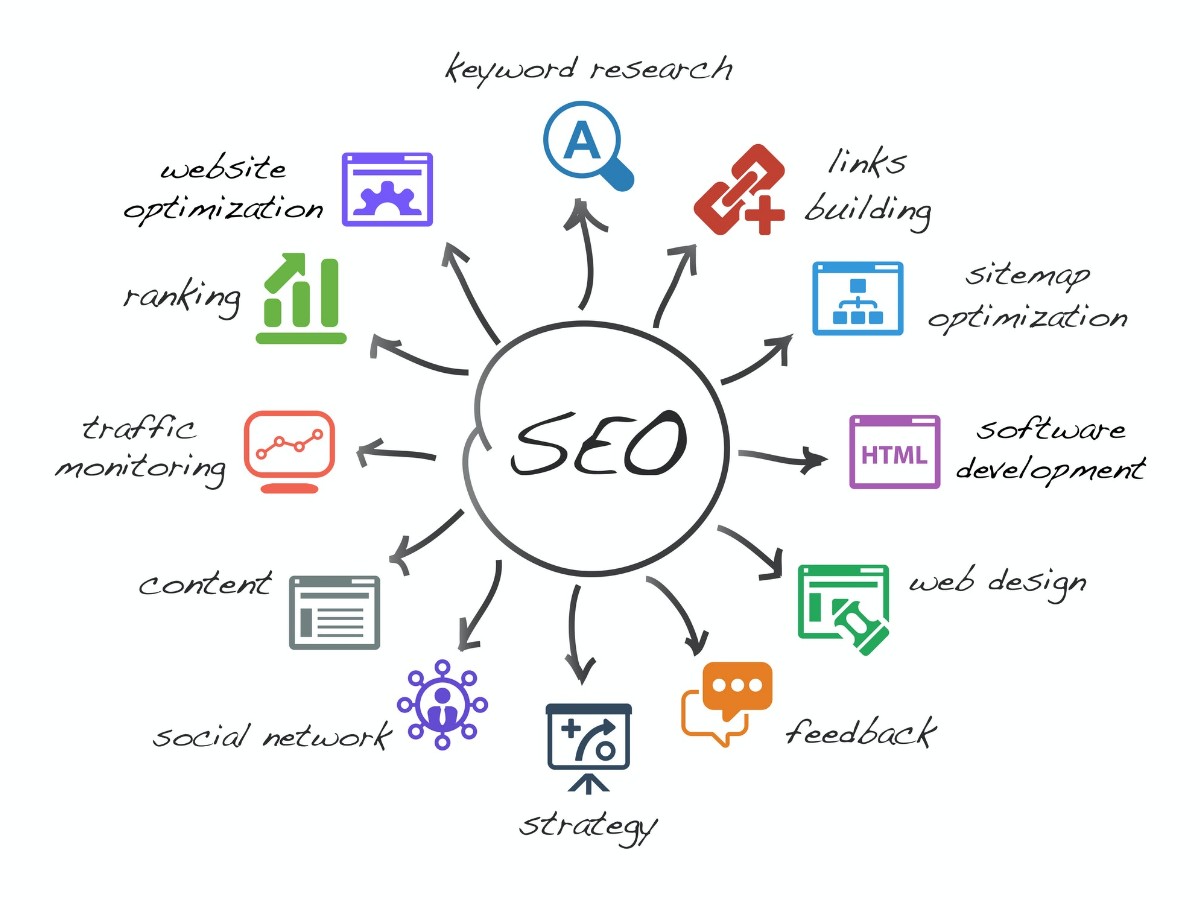The higher any content ranks organically for a search query, the greater percentage of traffic share earned and hence the value of search engine optimization (SEO). It is not surprising that just about every business wants and would benefit from improved search engine rankings. However, chasing the new shiny object, without understanding it, or your objectives, would be sub-optimal. To reduce the likelihood of wasting an enormous amount of time and money, we’ll share 10 things we review when considering a potential SEO client that roughly fit into three groupings: assessment, opportunity, and context.

Assessment
You would be skeptical of a doctor who prescribed medicine without first conducting an examination. How would you prioritize adding to your strength or addressing your weakness without having some clarity about the objectives you were aiming for? So, we begin with our client assessment with an SEO audit, asking questions such as:
1 Which terms generate your traffic now?
2 Branded versus discovery or knew versus new?
3 What is the volume for your highest rated terms?
Properly tagging your site with tools such as Google Analytics should help track the level and channels of your traffic. It would additionally be useful to understand what type of searches drive traffic to your site. With many clients, we notice that the majority of their traffic, sometimes in excess of 95%, results from some variation of a term that includes their brand name. They do not rank at all for discovery terms that attract far more traffic.
To illustrate the point, we’ll provide an example. Suppose you were a dentist named Dr. Smith and your website was DrSmithDDA.com. Customers who knew of you, drove by your office on Main Street, or were referred by another client might do a search “Dr. Smith” or “Dentist Smith.” In this branded search, Dr. Smith should rank organically in her local market. If Dr. Smith was relatively new in town, was on a side street, or wanted to attract customers from the next town over, how would prospects who did not already know her name find her? That’s where ranking for “discovery terms” gains in importance. By comparison, there are far many more people who might search for services such as “teeth whitening” or “clear braces” or “tooth pain” without knowing the name of a specific dentist. This is the difference between customers who knew of your services versus new prospects who have a problem where the service you provide might be a good solution.

Opportunity
Once we’ve determined which terms a site ranks for, we develop relevant terms which that site does not rank in the top 100. How much volume and how much competition do these terms get? Specificity matters. For example, which term attracts more monthly searches – employment attorney or employment lawyer? Would it surprise you to know that while these terms seem similar, one gets 18 times the search volume of the other? All other things being equal, target the term with higher search volume. In certain instances, targeting the term with the higher conversion might produce the higher return on investment. So, in general, the next group of questions would go along the lines of:
4 Is it worth ranking higher for your highest volume terms?
5 How relevant is that term to your services?
6 How difficult would it be to rank higher for that term?
7 What are other high volume, relevant, low difficulty terms you don’t rank for?
8 Which of these terms might have a high conversion?
Typically, higher ranked searched terms are more frequently sought after and more competitive. “Longer tail terms” might draw less competition but convert at a higher rate. The search term “plumber” draws twenty times the search volume of “emergency plumber.” However, it should be apparent why the latter term converts quicker and at a higher rate than the former. Depending on what your services are, you may want to optimize for one term compared to the other.
Context
You’ve driven all this new traffic to your site, now what? What do you want visitors to do when they get to your site? Should they call you, provide an email, or make an appointment? Is the page speed of your site fast? Is the format of your site suitable for mobile devices? Do you provide internal links to related articles on your site that might address concerns your prospects have?
9 Can your site or company convert this new influx of traffic?
10 What would be the right combination of price, testimonials, or case studies to nurture this traffic?
The type of content and your overall SEO strategy should go beyond attracting traffic or high click through rates. Your blog posts should aim to provide relevant web pages for a great user experience that goes towards building your brand and strengthening your community. Inbound marketing is about attracting your best prospects – those who have already expressed an interest in your solution – and demonstrating your thought leadership on the topic and related categories. It is important to note that inbound marketing is part art, part science and all about communicating. SEO is about understanding the ranking factors so that your material is more likely to be found by the right prospects when they are searching for solutions. It is part technical, part content, and all about connecting.
On-page, Off-page, In General
SEO is highly valuable. It does not have to be fully understood to be appreciated. What should be recognized however is that SEO is a tactic that needs to be guided by strategy that encompasses pre and post execution . Alt text, on-page and off-page activities, meta description and linking is technical SEO and has many moving parts which requires consistent attention to detail and probably should be solely left to professionals. However, your firm’s content is likely to be much better when you are involved with its planning and production. Eliminate duplicate content and assure that what remains is synchronized to your firms’ branding on your website, across social media and throughout all of your communication channels.
In March 2020, most cited studies pegged daily search volume at about 3.5 billion. In the six months since the start of the pandemic, daily search volume has ballooned to over 6 billion. All indicators point to growing usage of digitally researching for solutions prior to contacting any service providers. Some 90% of all purchases begin with an Internet search. Fewer than 1 in 12 searches go beyond the first SERP (search engine result page). Seventy two percent of all clicks accrue to the first ten or so organic listings of SERP.
How could you measure improvement without first establishing what is your baseline? When you are ready to improve your site’s ability to organically generate well qualified prospects to your business, reach out to WSI Vital Marketing for a conversation. We’ll be able to provide a no-strings, complimentary SEO audit to help you understand where you are. With that you should be able to begin planning which keywords to target and how to improve your domain authority for the inbound marketing purposes of informing, branding, research and lead generation.
Stay Connected